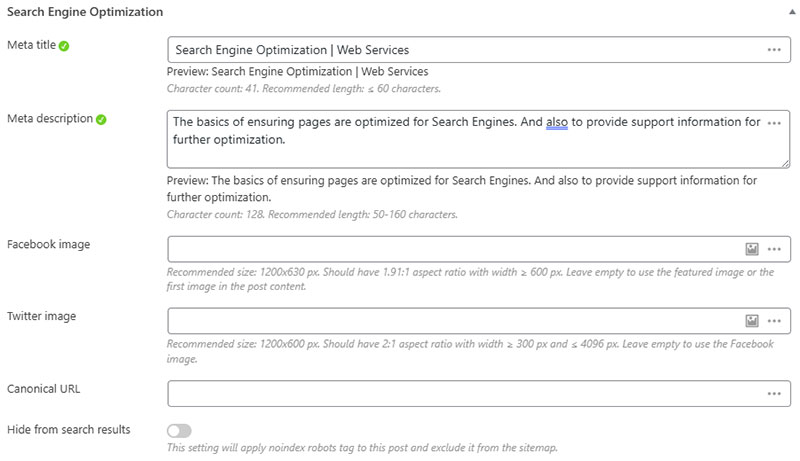SEO/SMO – Search Engine & Social Media Optimization
When creating new pages, or revising existing ones, you have the option of granular control over how your page shows on search engine results using a technique called Search Engine Optimization, or SEO. Similarly, when sharing content via Social Media apps, you may want more control over how content appears when shared – SMO or Social Media Optimization. By default, our system will pull text/graphic content from your pages to set up rudimentary SEO/SMO for you.
GEO or AISO – AI Search
With the rise of AI being used for search, GEO (Generative Engine Optmization) or AISO (AI Search Optimization it’s become incredibly important to address other elements within our web pages in order to ensure they resonate with our users and gain traffic.
50% to 90% of our traffic comes from search engines
For most providence.edu sites, most of our traffic- anywhere from 50% to 90% comes from search engines. And within that category, 90% of search engine traffic is from Google. For that reason, ensuring our pages are set up correctly so that the search engines can view and categorize them properly is very important.
Use the Search Engine Optimization Settings for more control
Setting up a handful of SEO options also allows you more granular control over how web pages are displayed within search engines. By default, if the SEO fields below are not filled in, our system will set up basic SEO for you by pulling content automatically from your page. This may be fine for you, but you also have the option to fill out the SEO fields which allows you a greater level of control so that you can customize how you want your pages to look in search results.
How to setup the Search Engine Optimization settings
When you are in a WordPress editing screen, scroll down toward the bottom of the page and you will see a section labeled Search Engine Optimization (see screenshot). If you do not see this section, it may be in a collapsed state or not installed on your site. Please contact the Web Services team if you cannot find it.

Defaults
By default, our SEO tools will automatically craft a meta title, meta description, and create Facebook/X images drawn from your on-page content and your page’s featured image. If you don’t want granular control over how your page appears in search engines, you don’t have to do anything more (though you may want to read further for more information about SEO, and why you might want to customize these fields).
If you are working with digital ads and need to aggressively monitor/market with keywords, you will want to personally edit these fields.
Meta Title
Fill out the Title Tag section by using the example structure we’d use for this page – think smaller to larger. Page title, then the department separated by the “pipe” character. Please see the example below.
Search Engine Optimization Details | Web Services
It’s important to try and keep your Title Tag to less than 60 characters- longer than that and it may be cropped by the Search Engines. The SEO section will track the number of characters for you as you insert it.
We set up title tags with this structure for a reason; it shows the relationship of the page to the department, linking them to each other and highlighting that relationship as it’s displayed on the various search engines. It’s important.
Meta Description
For the Meta Description, you want to write a concise description of what the page is about — what information a user might find here, its purpose, etc. This description is what will be displayed below the page’s title in search engine results. For example, the page you’re reading right now may be described as follows:
The basics of ensuring pages are optimized for search engines. Also to provides support information for further optimization.
Keep your Meta Description between 150-160 characters — the SEO section will track this number for you. This length ensures that the description is fully displayed in search engine results without being truncated, providing a concise summary of the content that encourages users to click through.
Facebook/Twitter Image
Use these fields to insert an image that will accompany text when someone is sharing your page’s link on social media. If you don’t include an image here, the system will automatically use the WordPress Featured Image for the page. If you don’t include a Featured Image, Facebook or Twitter (X) will use the first image found on the page, which may not be optimal.
Canonical URL
Please leave this field blank. Canonical URLs help to steer search engines to the correct, or most correct, page when similar pages or pages containing similar information on them are presented. More information on canonical urls is available at SEMRush.
Hide from Search Results
Leave this as-is. By turning this on, the page will not show in search results or the site map, basically excluding it from being found in searches, although users may still get to it if it is linked to from another page. If you have a situation where you want a page to be on the site, but excluded from search, reach out to Web Services for guidance.
Some SEO Tips…
- Write Short Titles – Use a maximum title length of 60 characters. If you use more characters, your title will be truncated when displayed in search results. If you use fewer, you may not be taking advantage of the valuable display space in search results.
- Identify Your Description Keywords – You should thoughtfully place keywords in your description, ensure the description makes sense and is readable by a human viewer. The key is to determine which keywords you want your site to be most closely associated with, without jamming a bunch of nonsensical words in your description — this undesirable technique is called “keyword stuffing” and can actually harm your page’s discover-ability. Web Services can assist you in determining those keywords. When in doubt, keep it simple, descriptive, and to the point.
- The Important Keywords Go First – Make sure to craft your description so that the most important keywords fall first in order. You may have to put on your writing cap for this one.
- Be Descriptive – The more descriptive you can be in describing what the page is about, the better. It will not only make more sense to the user, it will get you more appropriate traffic and a better search ranking.
- Create Unique On-Page Titles – This is very important. All page titles must be unique. Google (and the other search engines) will penalize sites that have multiple, repetitive page titles.
Drop us a line at Web Services if you have questions or would like to go over the search engine visibility of your site.





